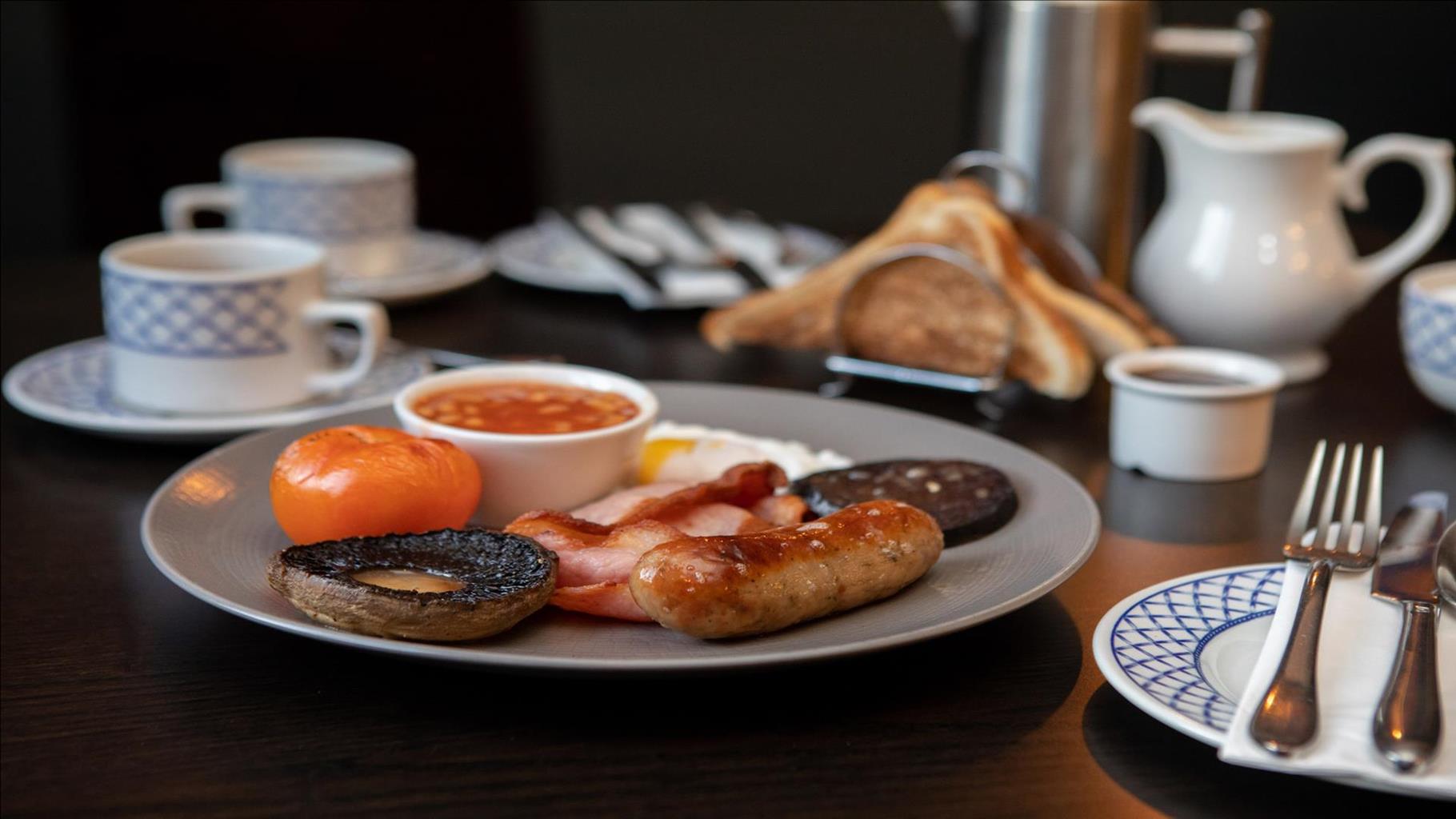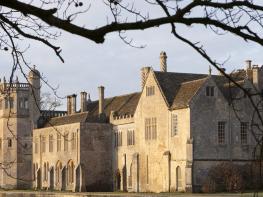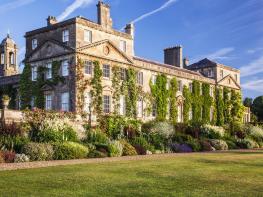This well-established inn in the centre of town, provides very high levels of quality and…
Corsham and Corsham Park

Explore this architectural treasure of a town and the adjacent Corsham Park.
4 miles (6.4kms)
About the walk
Warm, cream-coloured Bath stone characterises this handsome little market town on the southern edge of the Cotswolds. An air of prosperity pervades the streets where the 15th-century Flemish gabled cottages and baroquepedimented 17th-century Hungerford Almshouses mix with larger Georgian residences. Architectural historian Nikolaus Pevsner wrote: ‘Corsham has no match in Wiltshire for the wealth of good houses.’ The town owes its inheritance to the once-thriving industries of cloth manufacture and stone quarrying in the 17th and 18th centuries.
Spend some time exploring the heart of the town before setting off across Corsham Park, as many of the fine stone buildings along the High Street, Church Street and Priory Street have been well preserved. Begin your town stroll at the Heritage Centre in the High Street (No. 31), where interactive displays and hands-on exhibits present the stories of the weaving industry and quarrying of the golden Bath stone, which was used to create the architectural legacy of the town. In fact, No. 31 once belonged to a prosperous 18th-century clothier, and No. 70 (next to the Royal Oak) was the workhouse that provided labour for the cloth industry. The Town Hall was formerly the market hall, with one storey and open arches, before being converted in 1882. North of the post office you will see the unspoilt line of 17th-century weavers’ cottages. Known as the Flemish Buildings, this was the centre of the cloth industry where the Flemish weavers settled following religious persecution in their homeland. In Church Street, note the gabled cottages of the 18th-century weavers, with their ornate porches and a door on the first floor for taking in the raw wool.
The finest of the houses is Corsham Court, a splendid Elizabethan mansion built in 1582 on the site of a medieval royal manor. It was bought in 1745 by Paul Methuen, a wealthy clothier and ancestor of the present owner, to house the family’s collection of 16th- and 17th-century Italian and Flemish Master paintings and statuary. The house and park you see today are principally the work of ‘Capability’ Brown, John Nash and Thomas Bellamy. Brown built the gabled wings that house the state rooms and magnificent 72ft (22m) long picture gallery, and laid out the park, including the avenues, Gothic bathhouse and the 13-acre (5ha) lake. Round off your walk with a tour of the house to enjoy the outstanding collection of over 140 paintings, including pictures by Rubens, Turner, Reynolds and Van Dyck, fine statuary and bronzes, and the famous collection of English furniture, notably pieces by Robert Adam and Thomas Chippendale. The house was the backdrop for the film The Remains of the Day (1993), which starred Emma Thompson and Anthony Hopkins.
Walk directions
Turn left out of the car park, then left again along Post Office Lane to reach the High Street. Turn left, pass the tourist information centre and turn right into Church Street. Pass the impressive entrance to Corsham Court on your left, and, as you approach St Bartholomew’s churchyard, turn right to a kissing gate and avenue.
Follow the path left after a few paces and walk ahead across Corsham Park, passing Corsham Lake, to reach a stile and gate. Go slightly right along a fenced path beside a track to a kissing gate and proceed across a field to a stile and lane.
Turn left, pass Park Farm, a splendid stone farmhouse on your left, and shortly take the waymarked footpath right along a drive to pass Rose and Unicorn House. Cross a stile and follow the right-hand field edge to a stile, then bear left to a stone stile in the field corner. Head straight across the field to a further stile and lane.
Take the footpath opposite, bearing slightly left to a stone stile to the left of a cottage. Maintain direction, passing to the right of a spring, and go through a field entrance to follow the path along the left-hand side of a field to a stile in the corner. Turn left along the road for 0.5 miles (800m) to reach the A4.
Go through the gate in the wall on your left and follow the worn path right, across the centre of parkland pasture to a metal kissing gate. Proceed ahead to reach a kissing gate on the edge of woodland. Follow the wide path, bearing slightly right to a kissing gate.
Keep ahead on a faint path across the parkland and along the field edge to a gate. Continue to a further gate with fine views right to Corsham Court. To enter St Bartholomew’s churchyard, make for a gate in the right-hand wall. Otherwise continue ahead to a gate.
Turn left down the avenue of trees to a gate and the town centre, noting the stone almshouses on your left. Turn right along Lacock Road and then right again along the pedestrianised High Street. Turn left back along Post Office Lane to the car park.
Additional information
Field paths and country lanes, many stiles
Town streets, gently undulating parkland, farmland
Can be off lead in Corsham Park, except where grazing
OS Explorer 156 Chippenham & Bradford-on-Avon
Long-stay car park in Newlands Lane
Short-stay car park by shopping precinct
WALKING IN SAFETY
Read our tips to look after yourself and the environment when following this walk.
Find out more
Also in the area
About the area
Discover Wiltshire
A land shrouded in mystery, myth and legend, Wiltshire evokes images of ancient stone circles, white chalk horses carved into hillsides, crop circles and the forbidden, empty landscape of Salisbury Plain. To many M4 and A303 drivers heading out of London through the clutter of the Thames Valley, Wiltshire is where the landscape opens out and rural England begins.
Wiltshire’s charm lies in the beauty of its countryside. The expansive chalk landscapes of the Marlborough and Pewsey downs and Cranborne Chase inspire a sense of space and freedom, offering miles of uninterrupted views deep into Dorset, Somerset and the Cotswolds. Wiltshire’s thriving market towns and picturesque villages provide worthwhile visits and welcome diversions. Stroll through quaint timbered and thatched villages in the southern Woodford and Avon valleys and explore the historic streets of the stone villages of Lacock, Castle Combe and Sherston. Walk around Salisbury and discover architectural styles from the 13th century to the present and take time to visit the city’s elegant cathedral and fascinating museums. And if all of that isn’t enough, the county is also richly endowed with manor houses, mansions and beautiful gardens.
Nearby stays
Restaurants and Pubs
Nearby experiences
Recommended things to do
Why choose Rated Trips?
Your trusted guide to rated places across the UK
The best coverage
Discover more than 15,000 professionally rated places to stay, eat and visit from across the UK and Ireland.
Quality assured
Choose a place to stay safe in the knowledge that it has been expertly assessed by trained assessors.
Plan your next trip
Search by location or the type of place you're visiting to find your next ideal holiday experience.
Travel inspiration
Read our articles, city guides and recommended things to do for inspiration. We're here to help you explore the UK.













